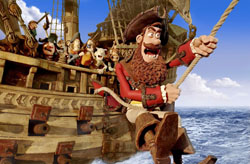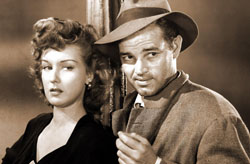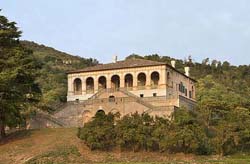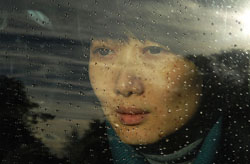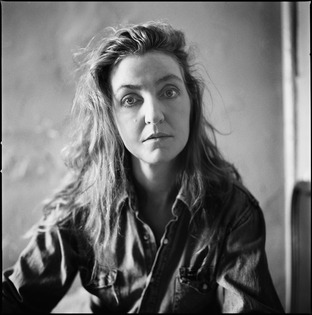Filed under: Cinema, Colli Euganei, Cose da vedere, Disegni, Estate, Luoghi in cui essere, Suoni da ascoltare
Euganea Film Festival
XI Edizione
6-22 Luglio 2012
Este/Monselice/Colli Euganei
L’undicesima edizione di Euganea Film Festival si presenta ricca di iniziative, e con forti connessioni con il territorio che la ospita.
E’ un festival di cinema aperto alle forme innovative dei linguaggi del documentario e del cortometraggio.
Si apre come una finestra sull’Italia e sul mondo, su ciò che sta accadendo e sulle nuove tendenze di un linguaggio che evolve di continuo.
Quest’anno è stato deciso di strutturare il festival partendo dai generi cinematografici che lo hanno caratterizzato in questi dieci anni: l’animazione, il cortometraggio e il cinema documentario.
Nascono così l’Euganea Comics & Animations e l’Euganea Doc, accompagnati da serate speciali interamente dedicate al cortometraggio.
Alle sezioni competitive tradizionali – Animazione,Cortometraggio e Documentario – si aggiungono il Premio Parco Colli Euganei,
dedicato alle opere che affrontano temi ambientali e il Veneto Movie Movement, sezione dedicata al cinema della nostra regione.
Infine, in collaborazione con l’Antica Trattoria Ballotta a Torreglia, verrà assegnato il 4° Premio Ruggero Gamba [Creatività e Territorio] ad un artista veneto.
Le proiezioni saranno accompagnate spesso dagli autori, che come ogni anno il festival ospiterà numerosi.
E ci sarà ancora il Cinemambulante, l’iniziativa che forse più di altre ha caratterizzato le ultime edizioni del festival.
Si rimette in movimento il furgone attrezzato per le proiezioni che attraversa i colli e proietta i film del festival nelle ville, nei castelli e nei parchi, invitando anche i paesi più lontani e i comuni più piccoli a ritrovarsi davanti allo schermo.
Quest’anno farà tappa al “Passo Fiorine” sul Monte della Madonna a Teolo, al “Castello del Catajo” a Battaglia Terme e al “Parco delle Ginestre” di Baone.
Come tradizione alle proiezioni si affiancheranno alcuni eventi speciali, quest’anno interamente dedicati al cinema.
Domenica 8 luglio in piazza Maggiore ad Este la proiezione di Pirati! Briganti da strapazzo, ultima fatica di Peter Lord della Aardman animations.
Venerdì 13 luglio nel Parco delle Fiorine di Teolo l’omaggio a Piero Tortolina con il film Detour di Edgar J. Ulmer, un capolavoro noir degli anni ’40 sulle strade degli Stati Uniti d’America.
Infine venerdì 20 luglio al Castello di Monselice la proiezione di Io sono Li di Andrea Segre, in concorso alla scorsa edizione del Festival del Cinema di Venezia, primo film del noto documentarista padovano girato interamente a Chioggia.
GLI EVENTI SPECIALI DEL FESTIVAL
PIRATI!
BRIGANTI DA STRAPAZZO
http://www.euganeafilmfestival.it/festival2012/programma.php?serata=8#pirati
Domenica 8 Luglio, ore 21.00
ESTE – Piazza Maggiore
WORKSHOP
DI ANIMAZIONE
http://www.euganeafilmfestival.it/festival2012/workshop.php
Sabato 7 e domenica 8 Luglio
ESTE – Accademia dell’Artigianato
Premio Creatività e Territorio
RUGGERO GAMBA
http://www.euganeafilmfestival.it/festival2012/programma.php?serata=18
Mercoledì 18 Luglio, ore 21.30
TORREGLIA – Antica Trattoria Ballotta
DETOUR
di Edgar G. Ulmer
http://www.euganeafilmfestival.it/festival2012/programma.php?serata=13#detour
Venerdì 13 Luglio
TEOLO – Parco delle Fiorine
EUGANEA DOC
Giornate di cinema documentario
http://www.euganeafilmfestival.it/festival2012/programma.php?serata=14
Venerdì 14 e sabato 15 Luglio
TORREGLIA – Villa dei Vescovi
IO SONO LI
di Andrea Segre
http://www.euganeafilmfestival.it/festival2012/programma.php?serata=20
Venerdì 20 Luglio, ore 21:30
MONSELICE – Giardini del Castello
Le immagini e le informazioni sono tratte dalla pagina web dell’Euganea Film Festival, dove si possono trovare ulteriori dettagli e aggiornamenti.
Qui il programma completo (in formato .pdf) di EFF_2012
Rebecca Solnit
Infinite City: A San Francisco Atlas
Paperback: 167 pages
Publisher: University of California Press; 1 edition (November 29, 2010)
Language: English
ISBN-10: 9780520262508
ISBN-13: 978-0520262508
Come Venezia, San Francisco è una città piccola; entrambe sono vaste non per il loro territorio ma per le possibilità che offrono all’ immaginazione.
– Rebecca Solnit, Infinite City
Rebecca Solnit ha realizzato per University of California Press
un atlante di San Francisco (e della Bay Area) davvero speciale.
La scelta attenta e la raccolta di parole e mappe piene di significato catturano ed evocano la realtà e la storia di una città simbolo.
La piacevolezza e la densità del segno sono insieme generazione di sensazioni e di pensieri.
Writer, historian, and activist Rebecca Solnit is the author of thirteen books about ecology, environment, landscape, community, art, politics, hope, and memory, most recently the bestselling Infinite City: A San Francisco Atlas, a volume of 19 essays and 22 innovative maps, for which she commissioned and coordinated contributions from 27 writers, artists, and cartographers. Other books include A Paradise Built in Hell: The Extraordinary Communities that Arise in Disaster; A Field Guide to Getting Lost; Hope in the Dark: Untold Histories, Wild Possibilities; Wanderlust: A History of Walking; and River of Shadows, Eadweard Muybridge and the Technological Wild West (for which she received a Guggenheim, the National Book Critics Circle Award in criticism, and the Lannan Literary Award). A product of the California public education system from kindergarten to graduate school, she is a contributing editor to Harper’s and regular contributor to the political site Tomdispatch.com .
Infinite City, Rebecca Solnit’s brilliant reinvention of the traditional atlas, searches out the answer by examining the many layers of meaning in one place, the San Francisco Bay Area. Aided by artists, writers, cartographers, and twenty-two gorgeous color maps, each of which illuminates the city and its surroundings as experienced by different inhabitants, Solnit takes us on a tour that will forever change the way we think about place. She explores the area thematically—connecting, for example, Eadweard Muybridge’s foundation of motion-picture technology with Alfred Hitchcock’s filming of Vertigo. Across an urban grid of just seven by seven miles, she finds seemingly unlimited landmarks and treasures—butterfly habitats, queer sites, murders, World War II shipyards, blues clubs, Zen Buddhist centers. She roams the political terrain, both progressive and conservative, and details the cultural geographies of the Mission District, the culture wars of the Fillmore, the South of Market world being devoured by redevelopment, and much, much more. Breathtakingly original, this atlas of the imagination invites us to search out the layers of San Francisco that carry meaning for us—or to discover our own infinite city, be it Cleveland, Toulouse, or Shanghai.
CONTRIBUTORS:
Cartographers: Ben Pease and Shizue Seigel
Designer: Lia Tjandra
Artists: Sandow Birk, Mona Caron, Jaime Cortez, Hugh D’Andrade, Robert Dawson, Paz de la Calzada, Jim Herrington, Ira Nowinski, Alison Pebworth, Michael Rauner, Gent Sturgeon, Sunaura Taylor
Writers and researchers: Summer Brenner, Adriana Camarena, Chris Carlsson, Lisa Conrad, Guillermo Gómez-Peña, Joshua Jelly-Schapiro, Paul La Farge, Genine Lentine, Stella Lochman, Aaron Shurin, Heather Smith, Richard Walker
Additional cartography: Darin Jensen; Robin Grossinger and Ruth Askevold, San Francisco Estuary Institute
MAPS:
The Names Before the Names
Monarchs and Queens, map with artwork by Mona Caron
“I wanted to make maps gorgeous, seductive, delicious, and beautiful again,” says author Rebecca Solnit, whose 13th book, Infinite City: A San Francisco Atlas (UC Press) has been released in November 2010.
“Cartography used to be both an art and a science. I wanted to return to that.” Solnit’s career up to this point—she has authored books on topics as diverse as human response to disaster, getting lost, and wanderlust—prepared her to create an atlas that maps her specific experience with the city she has called home her entire adult life. Solnit collaborated with 27 writers, cartographers, designers, researchers, and artists to create 22 full-color maps that offer whimsical, insightful views of the city, along with essays that expand on the sometimes-surprising juxtapositions within.
One map, titled “Monarchs and Queens,” shows butterfly habitats alongside queer public spaces.
Another, “Poison/Palate,” plots toxic mines and factories in the Bay Area alongside farmers markets, farms, and artisan food producers.
The multilayered maps are intended to be provocative. For example, her map of the Mission, which is paired with first-person interviews from residents and day laborers, draws the United States-Mexico border at Cesar Chavez Street.
“I chose 22 ways to map San Francisco out of a million possibilities,” says Solnit. “It’s like that old expression: A poem about something ugly can still be beautiful. A map about murder or urban redevelopment can still be beautiful.” Solnit’s research assistant, Stella Lochman, helped her collect data from a rich group, from salmon experts to a handful of San Franciscans who’ve lived in SF nearly 100 years. Mapping the city with their help not only expanded Solnit’s own sense of place, but it also revealed to her the popularity of cartography. “Maps make people happy,” says Solnit. “They show where you are, and people like to know that.”
The atlas was also an attempt to reclaim an art form, offering an alternative to Google Maps and GPS. “Those maps confirm a certain reality,” she says, “but not the only reality.”
Solnit hopes there will eventually be a series of atlases in this style, each mapping a different reality in a different town. “I called the book Infinite City because there are countless ways to consider a place,” she says. “It’s the atlas that’s finite—there is always more.”

